
Corruption, law and order, violence, people's alliances, populist policies - these are the main talking points in the ongoing assembly election in West Bengal. The big questions, though, are not discussed as animatedly: how is the state's socio-economic health? What should be the priorities of the next government?
Well, these figures might point way to the answers.
The Gross Value Added growth rate during 2014-15, according to the "achievement document" released by the ruling Trinamool Congress.
The average national GVA growth rate during the same year was 7.5%, or nearly three percentage points lower than Bengal's.
GVA "measures the contribution to an economy of an individual producer, industry, sector or region", according to the Financial Times.
Economists are split over which is a better measure of the economy's health, GVA or GDP.
Bengal's gross fiscal deficit as a share of its GDP in 2014-15, as per the RBI, a significant decline from 3.2% in 2012-13.
This makes Bengal the state with the lowest fiscal deficit in India, save Maharashtra.
The Trinamool government has often been criticised for spending large sums of money on "local clubs, meaningless cultural extravaganzas and doles". But such "wasteful expenditure" has clearly not increased the fiscal deficit as the critics feared.
Bengal's debt as a percentage of GDP in 2014-15, the worst of any state in India.
The debt though has declined steadily over the past few years, from nearly 40% in 2011-12.
The state's total debt burden amounts to Rs 2.7 lakh crore. But the good news is that, as per the RBI, revenue collection has lately been increasing.
Tax collection during Mamata's rule has reportedly doubled. But a sizable portion of the revenue still goes towards interest payments.
The number of jobs that the Mamata government has claimed to have created since May 2011.
The claim though has been disputed by, among others, Prime Minister Narendra Modi, Congress Vice President Rahul Gandhi and the state's former chief minister Buddhadeb Bhattacharya.
Further, the Opposition claims that most of these are contractual jobs for "civic volunteers" and "green police", which have been created by the Trinamool regime allegedly to wider the party's cadre base.
According to information provided on the Lok Sabha's website, youth unemployment in Bengal rose marginally from 4.1 million in 2011 to 4.2 million in 2012.
The Trinamool, however, claims on its website that West Bengal ranks 12th "in terms of lowest unemployment" in 2013-14, way up from 28th in 2011-12.
rupees
Investment pledged to the state at the Bengal Global Business Summit, which was held recently.
Her critics allege there has been no investment in Bengal since Mamata came to power "based on an anti-industry, pro-farmer image".
They point out that in the "ease of doing business" rankings, Bengal is not even among the top 10, despite boasting good connectivity as well as low cost of setting up business.
To be fair, it's not all Mamata's fault. The industry has largely stayed away from the state since the 1970s.
The only saving grace: the state leads in fisheries, leather industry, rice and tea production.
The number of girls who have availed the benefits of Kanyasree, an initiative of the state government praised by UNICEF and DFID.
Under this scheme, girls get Rs 500 a year as stipend and Rs 25,000 when they pass class X. The scheme is believed to have reduced the incidence child marriage.
The Mamata government has opened about 108 fair price medicine stores, and about 20 million people have availed discounts at these outlets, totalling Rs 580 crore.
Additionally, 8.4 million students from minority communities have received scholarships worth Rs 1,500 cror
Bengal's Infant Mortality Rate, which is defined as the number of deaths per 1,000 live births.
In this, Bengal performs much better the states in north, central and western India. Only the southern states and a few northeastern states fare better.
Mamata claims to have increased the number of "newborn care units" in the state to 45 from 6 in 2011.
The state's Maternal Mortality Rate. That is, 117 of every 100,000 women die due to pregnancy and childbirth related complications.
This ratio is better than the national average. Among states, only Kerala, Tamil Nadu and Maharashtra fare better than Bengal.
Bengal's child sex ratio is 950 per 1,000 boys as against the national average of 914.
On several other key health indicators as well, the state does better than much of the rest of India.
The share of schools with toilets for girls as of 2014-15. In 2009-10, only 39% schools had a girls' toilet.
About 97.9% of all schools in the state have the facility of drinking water.
The pupil teacher ratio in the final year of the Left regime was 39. The Trinamool has bettered it to 23. The average number of teachers per school has also increased from 4.3 to 5.9.
The share of crime against women Bengal accounts for in India.
The breakdown of law and order, especially the rise in crime against women, has emerged as the biggest challenge during Mamata's rule.
The chief minister has in the past accused women agitating against rape of being Maoists, and even branded one rape survivour as a woman of loose morals.
Other blots on Mamata's record are political violence - hundreds of Left activists have been forced into hiding - and endemic corruption exemplified by the Saradha scam.
Clearly, the next government needs to focus on improving law and order, curb political violence, and craft a road map for inclusive economic growth and employment generation.
First published: 22 April 2016, 6:54 IST

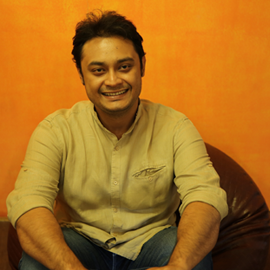
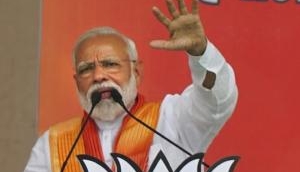
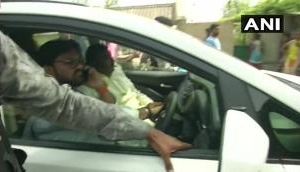
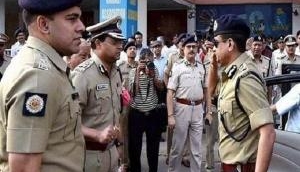
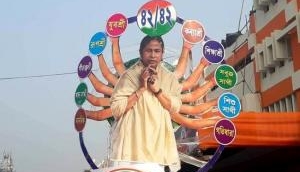
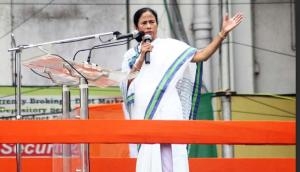
![BJP's Kapil Mishra recreates Shankar Mahadevan’s ‘Breathless’ song to highlight Delhi pollution [WATCH] BJP's Kapil Mishra recreates Shankar Mahadevan’s ‘Breathless’ song to highlight Delhi pollution [WATCH]](https://images.catchnews.com/upload/2022/11/03/kapil-mishra_240884_300x172.png)

![Anupam Kher shares pictures of his toned body on 67th birthday [MUST SEE] Anupam Kher shares pictures of his toned body on 67th birthday [MUST SEE]](https://images.catchnews.com/upload/2022/03/07/Anupam_kher_231145_300x172.jpg)






